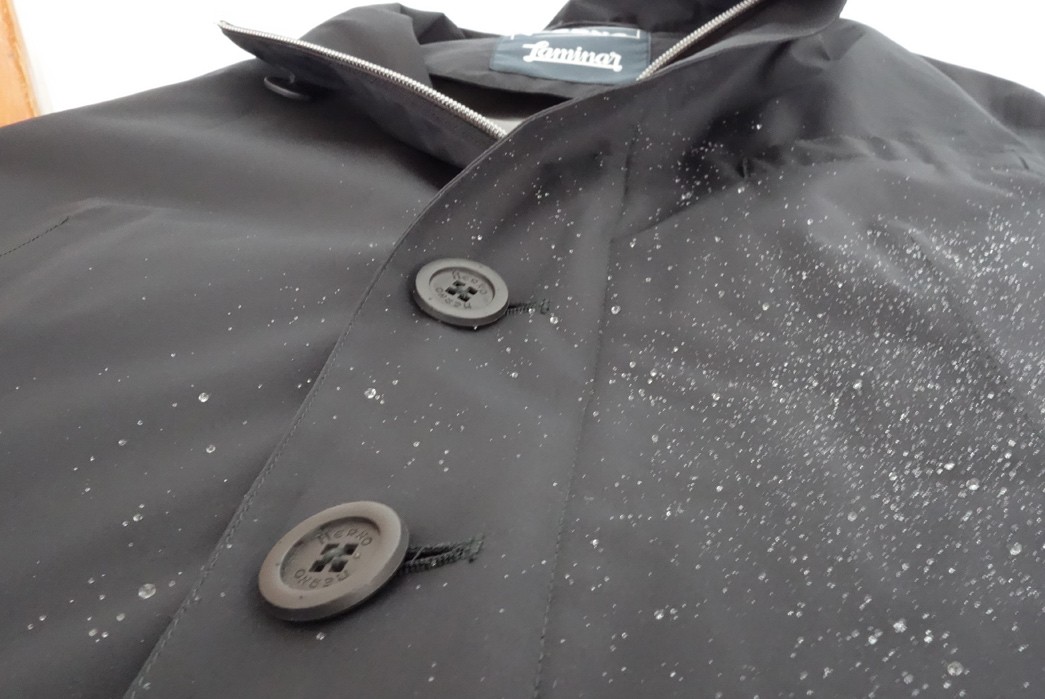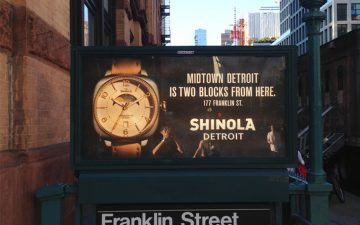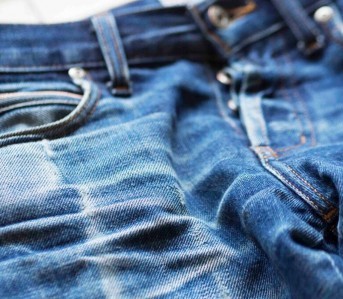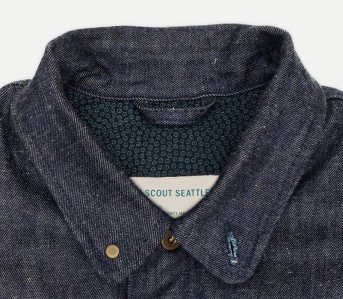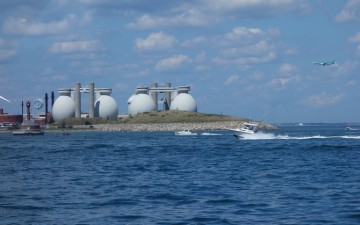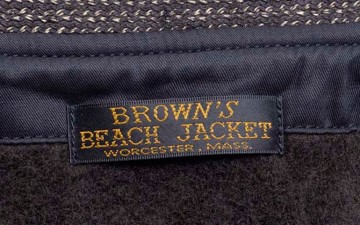Beneath the Surface is a monthly column by Robert Lim that examines the cultural side of heritage fashions.
As I wrote about last fall, my increased travel schedule means I’m obsessed with dual ops these days. By which I mean something that is at the intersection of two adjacent categories, yet functions well at both. A duffel bag that is also a backpack (in two different ways – hello Outlier x Boreas!) or a well-designed shirt jacket, for instance.
It is an actual “thing” now, but a shirt jacket is really just a shirt out of a fabric we expect from a jacket–a heavier cotton or wool, maybe. And really, a shirt and a jacket aren’t functionally adjacent at all, so even a good shirt jacket has the feeling of a hack to it–the “jacket-y” details often don’t read well, whether visible hand pockets or odd jacket-like details on the placket or collar.
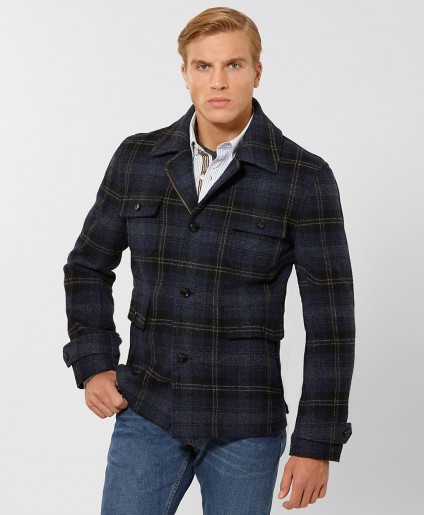
Fig. 2 – Shirt vs Jacket, yet no one wins. Image via Brooks Brothers.
At the moment, the crux of my obsession is the tech blazer–broadly speaking, a blazer made out of high performance activewear fabrics (the type made by Gore-Tex, Schoeller et al). Or I should say, a sport coat – but more on that later. A handful of brands turn these out on a fairly regular basis – Arc’teryx Veilance usually has one or two, as does Stone Island Shadow Project.
Recently, brands as diverse as Band of Outsiders, Adidas Consortium and even mainstream heavyweights like Zegna and Canali are getting in on the action. Acronym have a really funky soft shell version (the DS-J5) as well, but the one that really crushes it is the City Zip Blazer from Herno’s Laminar SS14 collection (a collection within that brand, designed by Errolson Hugh’s Acronym design studio).
Among the various brands / collections with which Hugh’s design team are involved (including Acronym, Nike ACG, Stone Island Shadow Project), Herno Laminar is the most explicitly connected to traditional menswear forms – its motto is very aptly, “sartorial engineering”. It’s as if the team entered an Italian brand with a tradition for men’s rain gear and were asked “how do we do this, with all of the latest technology out there today” without any change to the original functional requirements. This blazer is the seeming embodiment of his team’s answer to that imaginary challenge.
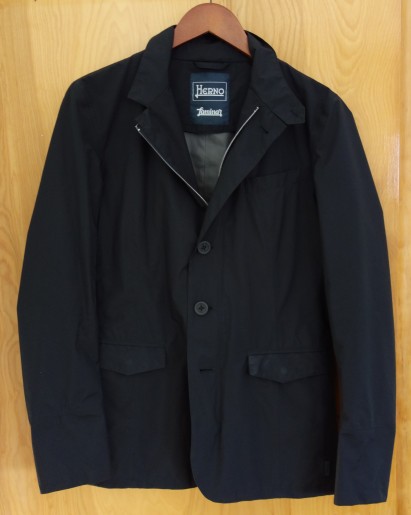
Fig. 3 – The City Zip Blazer by Herno Laminar
The City Zip Blazer is constructed from Gore-Tex’s Paclite fabric, a lightweight version of their signature membrane that offers the same waterproof and windproof attributes in a lighter fabrication. The piece is meticulously patterned to be tailored, but not in the least restrictive–you can reach your arms out any direction without any pulling of fabric or fear of exposing your watch. This patterning is the result of its creators’ approach to design (creating freedom of movement without introducing excess fabric, or “dirt,” into the final piece), which really gets to the heart of how to effectively use technical materials on a “heritage” form.
The challenge is: you can’t just take a classic pattern for a piece made out of natural fibers and swap the material to a fabric like Paclite without a corresponding adjustment in its form to counterbalance that change. If you do, that’s not design, it’s laziness. Alternately, you can throw a bunch of awkward pockets and random zippers on a blazer form to make it new, without adding anything useful. It’s a really difficult problem to solve: to add something new to an existing form while keeping true to its DNA, without under-designing or over-designing.
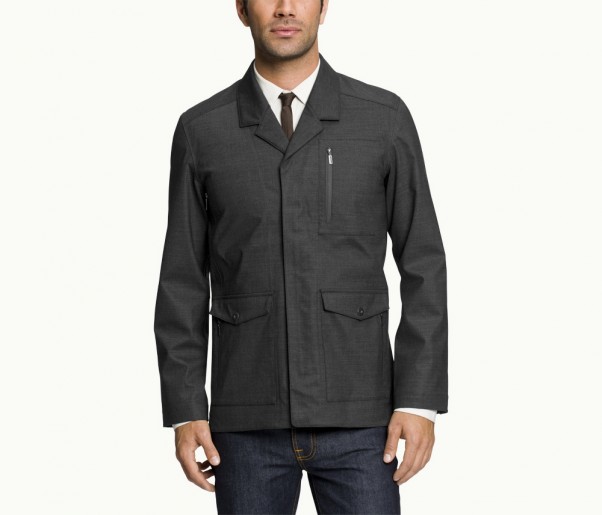
Fig. 4 – How Soon Is Nau? The Uncanny Valley of the Hokkaido Blazer cum Field Jacket. Image via Nau.
The City Zip Blazer is an elegant solution to the problem: it zips up to a Harrington-style collar, so is suitable to wear as an outer layer in moderate conditions or (zipped 1/3 of the way down) as an inside layer to provide wind resistance underneath a less technically capable jacket (in an inversion of an outdoors hard shell over an insulating layer). And also, unlike some other tech blazers, it’s recognizably a sport coat, meaning that it can be worn indoors without drawing much attention.
It’s this last part that makes me understand the true distinction between a blazer and a sport coat. These days, Americans use the term “blazer” to describe any kind of gentleman’s jacket that is meant to be worn with separate pants. A proper blazer, though, is that dark blue thing with patch pockets and gold buttons that was a staple of the Ivy League style not too long ago–it is a uniform that has its roots in nautical activity (including a yearning to row for Oxbridge schools or their stateside equivalent, presumably).
A sport coat (also referred to as a sports jacket) is similar, but serves an alternate, equally specific purpose–to wear while watching outdoor sports–or maybe a gentleman’s outdoor pursuits. To this end, sports jackets are constructed from fabric appropriate to outside activity (tweed, for instance). That is to say, its material is a key component of its design and a sport coat is like a blazer meant as outerwear–it’s the original tech blazer.
Appropriate outdoor wear in today’s urban context is different stylistically than it was in the nineteenth century, even though some of the technical challenges are similar. What I find intriguing about a good tech blazer is that it solves an age old problem, in a new way. Unlike with a Barbour jacket, you probably wouldn’t rock it with a Filson bag – but nonetheless, the tech blazer is a legitimate expression of its own heritage.

